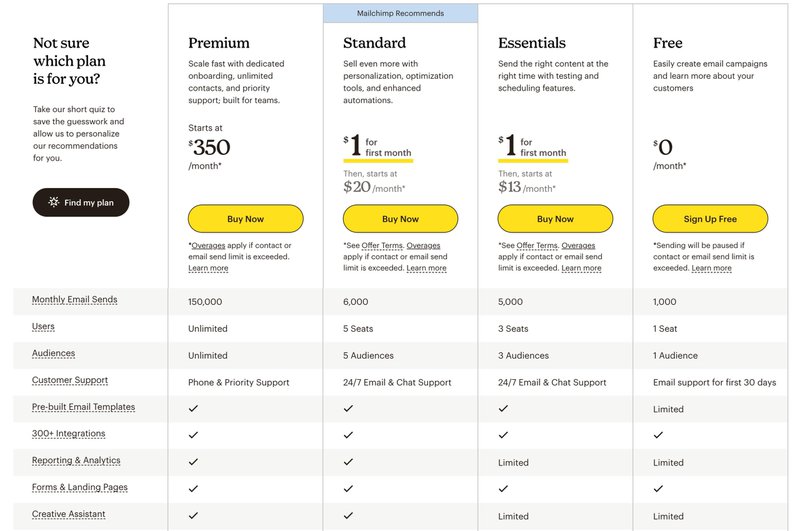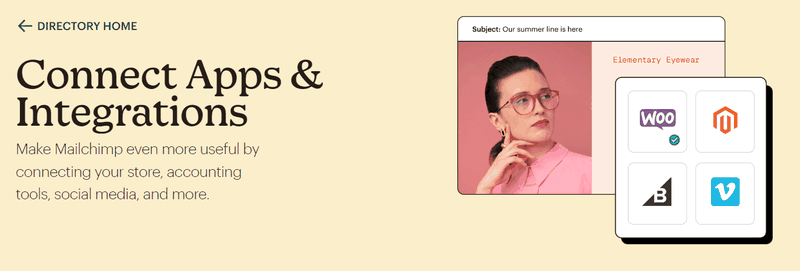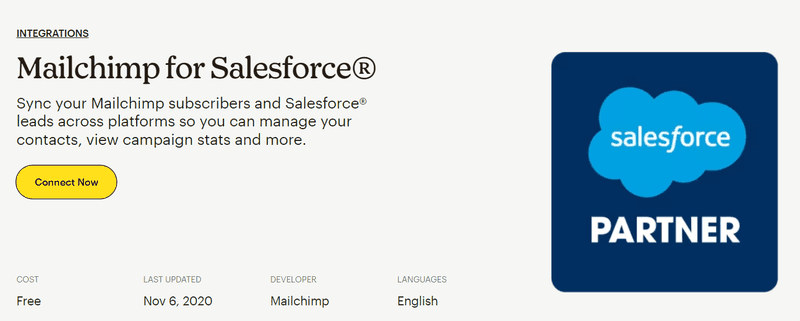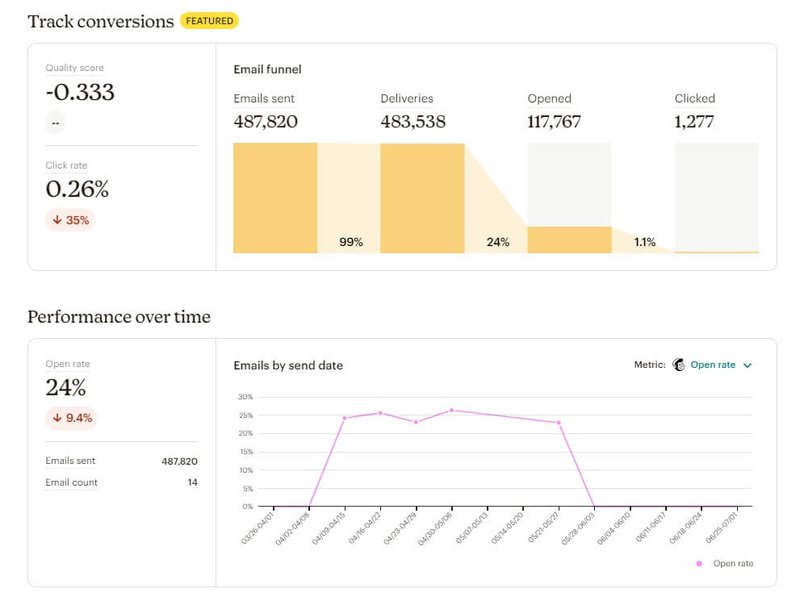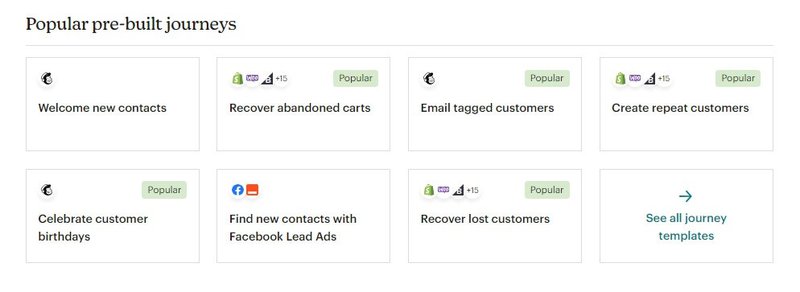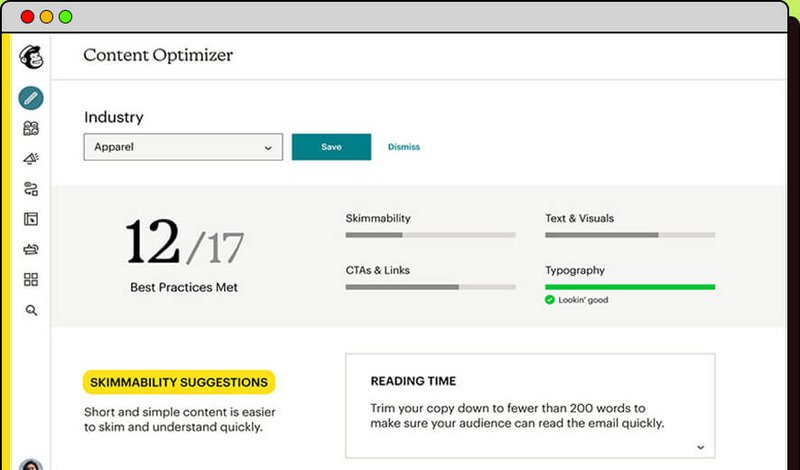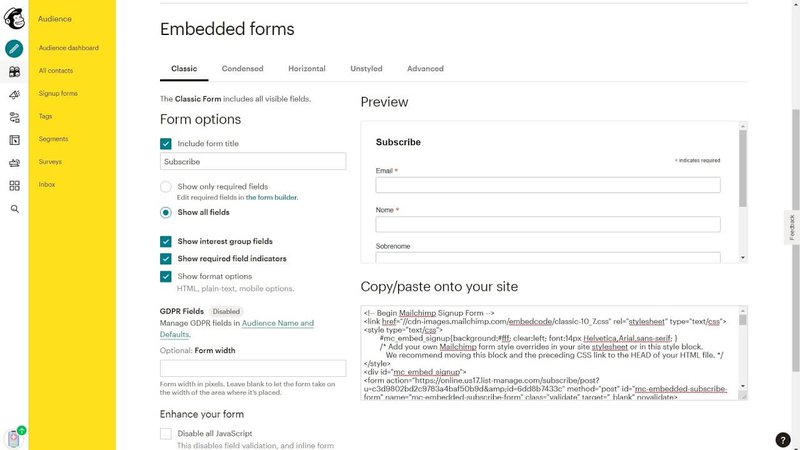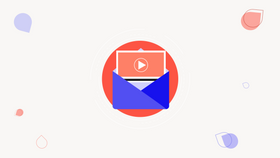What Is Mailchimp and How To Use It in 2025 (Beginner’s Guide)
Learn about Mailchimp and why it's right for your business. Discover its latest features. Journeys, automated flows, popups, surveys, SMS, and more.
Updated November 6, 2024.
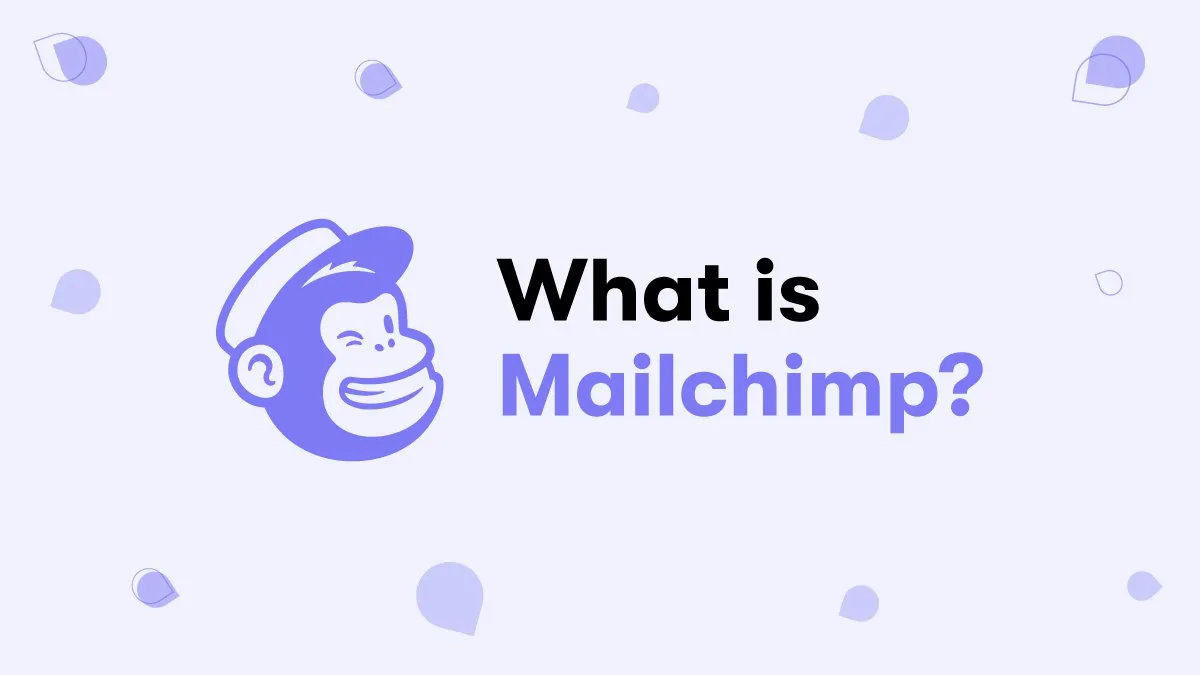
Imagine marketing your products on an owned channel without relying on algorithms, and communicating with each customer individually while reaching an audience of thousands at once.
This is the promise of email marketing, a market predicted to reach no less than $17.9 billion by the end of 2027.
But you can't do effective email marketing without an email marketing tool. With over 13 million users, Mailchimp is one of the world's most popular, most user-friendly email marketing platforms on the market.
What is Mailchimp, though, and why is it so popular?
Read on to find out.
What is Mailchimp used for?
Mailchimp is an email marketing platform tailored to a wide range of businesses (from small businesses and online stores to large enterprises). It provides you with the tools you need to create, send, and track engaging email campaigns to your customers and subscribers.
Mailchimp is the trade name for one of the market's first and most comprehensive email marketing tools on the planet. The tool comes with plenty of features you can use to manage your mailing list, design eye-catching campaigns, automate emails, and track campaign performance, all in one place. It was founded in 2001 and is now owned by Intuit.
How much does Mailchimp cost?
Mailchimp is sold on three main verticals: Marketing Platform, Website & Commerce, and Transactional Email.
For the Marketing Platform vertical, Mailchimp comes with four billing plans, each adjustable according to the number of contacts you have in your email list. Each monthly plan has its own plan structure and list of features:
- The Free-forever plan includes 1 user, 1 audience, 1,000 monthly email sends, no automated customer journey points, and limited features.
- Essentials offers 3 users, 3 audiences, 5,000 monthly email sends, 4 automated customer journey points, and some advanced segmentation options and features.
- Standard provides 5 users, 5 audiences, 6.000 monthly email sends, 200 automated customer journey points, and more advanced features.
- Premium includes unlimited users, unlimited audiences, 150,000 monthly email sends, 200 automated customer journey points, and many advanced features.
If you have up to 500 contacts in your email list, the Essentials plan will be $13/ month, Standard will be $20/ month, and the Premium plan will be $350/ month. For 250,000 contacts, you'll pay $260, $270, respectively $620/ month.
There are also options for larger contact limits, but the higher the contact allowance limit, the more likely that the Premium plan will be the only relevant option for you. In that case, you will have to contact sales for a quote.
The good news is that you can try Mailchimp for free, and you'll still have access to a pretty wide range of features. Testing Mailchimp's features allows you to create a couple of campaigns, and you can simply upgrade as you go.
We appreciate that because we believe that your email marketing platforms should grow with you, rather than having to fork out a fortune when you're just starting out with your email marketing campaigns.
For the Website & Commerce vertical, you can pick from three pricing tiers,
- Free: $0/ month, but you have to pay 2% in transaction fees; includes basic features for website building
- Core: $8.97/ month + 1.5% Stripe transaction fee; includes 24/7 support
- Plus: $26.02/ month + 0.5% Stripe transaction fee
As for the Transactional vertical, their pricing is based on "blocks." Each block allows you to send 25,000 emails and it costs $20 per block if you get between one and 20 blocks. The price goes down by $2 for every 20-block increment, so it will be $18 for 21-40 blocks, $16 for 41-60 blocks, and so on.
Benefits of using Mailchimp
There are many benefits of using Mailchimp for your email sequences and newsletters:
Easy to use
Mailchimp's user-friendly interface and intuitive design make it accessible for eCommerce owners with varying technical expertise. You can create professional-looking emails without coding or design skills, saving time and effort.
Robust selection of email marketing features
Mailchimp offers a comprehensive suite of email marketing features tailored to pretty much every type of business. You can utilize customizable email templates, product recommendations, automated email flows, and personalized content to engage your audience and drive conversions.
Analytics features
With Mailchimp, you gain valuable insights into your email campaign performance through robust email analytics features. You can track open rates, click-through rates, conversion rates, and revenue generated, allowing you to make data-driven decisions and optimize your future campaigns.
250+ integrations
Mailchimp integrates with the most popular eCommerce platforms out there – more on that later. Each integration allows you to sync customer data, automate personalized product recommendations, and send targeted emails based on purchase behavior.
Integrating Mailchimp with your eCommerce platform streamlines your marketing efforts and maximizes your potential for conversions.
Reliable
Email marketers recognize Mailchimp for its reliability and deliverability. The company has been around for over two decades and is fully invested in continuous, sustainable growth. It certainly doesn't seem to be going anywhere anytime soon!
Mailchimp also has a strong infrastructure and industry-leading email delivery rates. This means you can trust that your emails will reach your customers' inboxes regardless of their email service providers, ensuring maximum exposure for your brand.
Wide range of extra features
Mailchimp goes beyond basics when it comes to email marketing. As you will see later in the article, it boasts plenty of features to help you ensure your email efforts are successful.
From the Customer Journey Builder to AI-assisted designs, social media integrations, and even a landing page builder, Mailchimp has everything you need to create winning email campaigns.
Start with a free account
Mailchimp's free plan offers essential features for eCommerce businesses just starting with email marketing. This allows you to test the platform and experience its benefits firsthand before committing to a paid plan. It's a great option for small businesses looking to establish their presence in the eCommerce market.
Mailchimp integrations
Mailchimp's integration capabilities are a significant advantage for eCommerce businesses.
Let's explore how Mailchimp integrates with various platforms to enhance your email marketing efforts:
eCommerce platforms
Mailchimp integrates with popular eCommerce platforms like Shopify, WooCommerce, and Magento. This integration lets you sync customer data, order history, and product information with Mailchimp.
By leveraging this integration, you can automate personalized product recommendations, send abandoned cart emails, and create targeted campaigns based on purchase behavior.
CRM systems
Integrating email marketing tools with your CRM (customer relationship management) system gives you a comprehensive view of your customers.
When you connect your Mailchimp with CRMs like Hubspot or Salesforce, you can sync customer data, track customer interactions, and use the data to create highly personalized email campaigns. This integration helps you deliver relevant content for each customer, increasing engagement and conversions.
Social media platforms
Mailchimp integrates with popular social media platforms, including Facebook, Instagram, and Twitter. Synchronize your email marketing efforts with your social media strategy by publishing content on your social channels without leaving Mailchimp.
Landing page builders
Mailchimp's integration with landing page builders like Unbounce and Instapage empowers you to create visually appealing landing pages that align with your email campaigns.
These landing pages can be designed to capture leads, promote special offers, and drive conversions. The integration ensures a seamless customer experience, from email clicks to landing page engagement.
Customer Journey Builder
Mailchimp's Customer Journey Builder allows you to create automated customer journeys tailored to your target audience. This tool helps you track and analyze customer behavior to better understand their needs and preferences.
You can use this data to create highly personalized Mailchimp drip campaigns that automatically trigger when customers meet certain criteria. For example, if a customer abandons their cart, an abandoned cart reminder email will be sent after they meet the criteria you set in the Customer Journey Builder.
Analytics & reporting tools
Mailchimp integrates with popular analytics and reporting tools like Google Analytics and Power BI.
These integrations allow you to track and analyze your email campaign performance alongside other marketing metrics, so you can gain a comprehensive view of your eCommerce marketing efforts – and make informed decisions for future optimizations.
Mailchimp's core features
Here is a short list of some of the most popular Mailchimp features.
- AI-powered Content Optimizer - get suggestions on how to improve your email campaign using AI.
- Comprehensive campaign reports - see all your KPIs in one glance
- Send day optimization - get data predictions on the best send time for your next campaign
- Mailchimp Surveys - send surveys to your email list directly from Mailchimp
- SMS text messaging - send text messages directly through Mailchimp without having to integrate with another service provider
- Multichannel Calendar - lets you schedule and track your marketing efforts across different channels and platforms
What can Mailchimp do for your eCommerce business?
Mailchimp offers a wide range of attractive features and functionalities that cater specifically to the needs of eCommerce businesses, including:
Manage email address lists
With Mailchimp, you can easily manage your mailing list and choose from the numerous segmentation options. For instance, you can segment subscribers based on their behavior, preferences, and demographics.
Segmenting your audience lets you send highly targeted emails, not to mention set the stage for your email copywriter to create laser-cut-fitting subject lines.
Promote the right products at the right time, so you can drive more conversions with messaging your email subscribers can relate to.
Create campaigns
With Mailchimp's drag-and-drop email editor, you can create visually stunning email campaigns and newsletters without coding or design skills. Customize your emails' design, layout, and content to match your eCommerce brand's identity, ensuring a consistent and appealing experience for your customers.
Need help improving your newsletter? Check out our guide on creating newsletters in Mailchimp.
Track & report on analytics
Mailchimp provides robust analytics features to track the performance of your email campaigns. You can measure open rates, click-through rates, conversion rates, and even the revenue your emails generate. These insights enable you to optimize your campaigns and make data-driven decisions to maximize your eCommerce ROI.
Email automation
Automation is a game-changer for eCommerce businesses. Mailchimp's automation features allow you to set up triggered emails based on customer actions or milestones. You can automate welcome emails, abandoned cart reminders, product recommendations, transactional emails, and post-purchase follow-ups.
Automating these workflows saves time and delivers timely, personalized messages to your customers, increasing engagement and driving sales.
Customizable email templates
Mailchimp offers a vast library of customizable email templates tailored to eCommerce businesses. You can choose from a range of professionally designed templates and customize them to match your brand. This helps you make your emails visually appealing and consistent with your eCommerce website's design.
A/B testing
Mailchimp's A/B testing feature enables you to experiment with different subject lines, content layouts, and calls-to-action within your email campaigns. By testing and comparing different versions of your emails, you can identify what resonates best with your audience and optimize your campaigns for higher engagement and conversions.
AI content optimizer
Mailchimp's AI-powered content optimizer analyzes your email content and suggests improvements to maximize engagement. From subject lines to email body text, the AI content optimizer provides recommendations based on industry best practices and data-driven insights. This helps you create compelling emails that capture the attention of your customers.
Create transactional emails
In addition to marketing campaigns, Mailchimp allows you to send transactional emails to your email subscribers. These could include order confirmations, shipping notifications, and password resets.
You can customize these transactional emails to match your brand's voice and maintain a consistent customer experience throughout their eCommerce journey.
Signup forms
With Mailchimp, you can easily create signup forms and add them on your eCommerce website or landing pages. These forms enable you to encourage sign-ups, capture leads, grow your mailing list, and nurture potential contacts, i.e. customers, with targeted email campaigns.
Use these forms as you see fit:
- As a pop-up, useful when you want to prompt action before the reader exits the page
- Embedded on the page, great for encouraging readers to sign up for more information
Mailchimp also allows you to create contact forms, which can be added to your website to capture leads and customer inquiries. You can also select from a variety of form fields to make your Mailchimp popup forms are more user-friendly and ensure you're collecting all the data you need.
Last, but definitely not least, Mailchimp also allows you to add a checkbox option users must tick before they submit the option. This allows you to add a GDPR-friendly layer of consent to your forms, so you know for certain that you have your subscribers' consent.
Customer surveys
Mailchimp's built-in survey feature empowers you to collect valuable feedback from your eCommerce audience. You can create and send surveys to understand your customers' preferences, satisfaction levels, and purchase intent.
This data helps you tailor your products, services, and email campaigns to meet the needs and desires of your customer base.
Audience segmentation
Mailchimp's audience segmentation is a key feature that allows you to divide your customer base into specific groups based on their behavior, preferences, demographics, or purchase history. By segmenting your audience, you can send personalized emails that resonate with each segment, driving engagement and conversions.
Landing pages
Mailchimp enables you to create landing pages within the platform to complement your email campaigns. These landing pages serve as dedicated destinations for your audience, where you can promote special offers, capture leads, or showcase new products.
By aligning your landing pages with your email campaigns, you provide a seamless user experience and increase the likelihood of conversions.
Dynamic website builder
Mailchimp's website builder allows you to create and host a simple eCommerce website directly within the platform. This key feature is particularly useful for small eCommerce businesses that want to establish an online presence quickly and easily, without having to hire a web developer.
This website can showcase your products, provide essential information, and drive traffic to your eCommerce store.
Creative Assistant
Mailchimp's Creative Assistant is one of the gems in the list of features Mailchimp offers. This tool lets you create email designs at the click of a button by analyzing your brand assets, such as logos and images, and suggesting visually designs.
The Creative Assistant helps you maintain a consistent and aesthetically pleasing eCommerce brand identity in an easy, hassle-free way.
Who is Mailchimp best for?
Mailchimp is an ideal email marketing solution for business owners across various industries. Whether you run a small boutique store, a growing online marketplace, or an established eCommerce brand, Mailchimp's features and flexibility cater to businesses of all sizes.
It is particularly beneficial for eCommerce businesses that want to streamline their email marketing efforts, reach a wider audience, and drive engagement and sales.
As a general rule, Mailchimp is suitable for everyone – particularly busy marketing managers who may not have a lot of time on their hands and need to run comprehensive email campaigns that actually work.
Should you get Mailchimp as your email marketing software?
Mailchimp is one of the best-known and most affordable email marketing tools in the world. And there's a reason they've been on the email marketing scene for so long: the tool works. It's not just a fancy software to help you send bulk email campaigns and email newsletters to – it's a real leader among email marketing software options.
If you are a very advanced user and want access to more email marketing analytics and data points to feed into your systems, Mailchimp may feel limited. But as far as email automation tools, Mailchimp is a stellar marketing automation option, as it delivers more than just basics.
It can help you create beautiful emails, build advanced email sequences, and dabble in every single one of your email marketing endeavors. More than anything, it will make everything easy for you.
Looking for a Mailchimp expert to help you make the most out of this platform?
Hire a Mayple-vetted email marketing consultant or email marketing agency to help you improve your campaign Performance. Just contact us, and we'll match you with a perfect fit in a matter of days!
FAQs
What are the limitations of Mailchimp?
Mailchimp doesn't allow you to tag contacts based on what actions they take in the emails. For instance, you can't tag someone as "opened." or "unsubscribed." You can track who clicks, opens, or unsubscribes from your email list, but you can only report these actions at campaign level (not create tags and segments based on them.)
What is the difference between Gmail and Mailchimp?
The difference between Gmail and Mailchimp is that Gmail is an Email Service Provider (a tool you use to send, receive, and read emails). In contrast, Mailchimp is an email marketing automation platform that allows you to send bulk emails (thousands of emails per month) to large numbers of email address entries in your list.
Mailchimp also allows you to build complex workflows, send triggered emails (like abandoned cart emails, for example.), and connect your eCommerce store to see purchase activity. It also has an email builder that can help you create email flows and marketing journeys to specific segments.
Does Mailchimp sell your email address?
Mailchimp does not sell any personal information for their members, their members' distribution lists, or their members' contacts.
Does Mailchimp charge per email?
Mailchimp has different pricing plans, depending on what your goal is with the platform, which features you need, and how many email address entries you have in your list. Mailchimp is definitely an affordable option when it comes to email marketing. Alternatively, you can also get Mailchimp credits which you pay as you go. Instead of paying for a flat-rate subscription that includes a given number of emails, you pay for each email you send.
How many emails can I send with Mailchimp for free?
The Free Mailchimp plan allows you to send up to 1,000 emails to 500 contacts, with a daily limit of 500 emails. Paid plans allow you to send more emails and include more contacts in your list (e.g., the Essentials plan allows you 5x more emails, the Standard one allows you 6x, and the Premium one allows you 15x more monthly email sends (as compared to the Free plan.)
Can you send regular emails through Mailchimp?
You can send regular emails through Mailchimp, but only in bulk (you cannot send an email to just one person.) Regular emails in Mailchimp are email campaigns sent to more contacts at once, and the campaign builder allows you to add recipients, choose which settings work with your campaign, as well as design your content.

